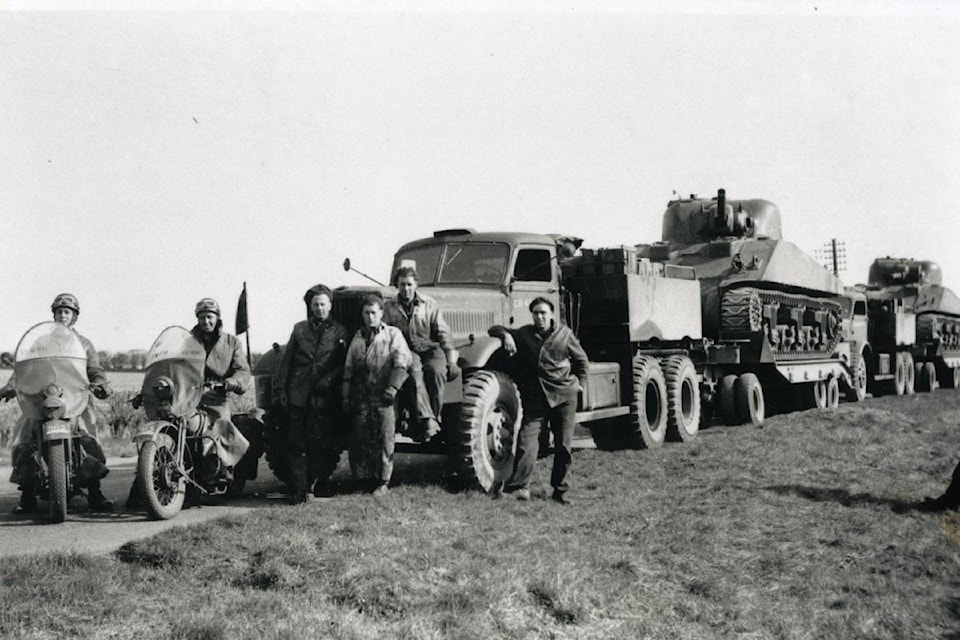Tuesday, May 5, is an important day and a national holiday in the Netherlands.
It is the 75th anniversary of the official liberation of the country from the occupation by Nazi Germany.
Canada played an important role in this milestone of the Second World War. Therefore, hopefully, it will be an anniversary well remembered in Canada too.
The Netherlands had been able to avoid being caught up in the brutal First World War, even though much of it raged a short distance to the south in Belgium and northern France.
When the Second World War broke out in September 1939, there were some hopes that the Netherlands might be able to remain neutral once again.
However, on May 10, 1940, the German military suddenly invaded, even though there had been no declaration of war.
The Dutch army was unable to stem the massive assault. Hence, on May 15, 1940, the Netherlands was forced to formally surrender. Five years of increasingly brutal occupation followed.
A major turning point in the Second World War occurred on June 6, 1944, D-Day, when the Allied forces made a successful invasion of Normandy, France.
Over the succeeding weeks, the Allies, including Great Britain, the United States and Canada, were able to fight their way across northern France towards Belgium, the Netherlands and, ultimately, Germany.
On Sunday, Sept. 17, 1944, the massive Operation Market Garden was launched, with the target of securing a bridgehead across the Rhine River into Germany near the Dutch city of Arnhem.
As detailed in the famous movie, A Bridge Too Far, the operation ultimately failed. The Allies were forced to pause, solidify the gains that had been made and develop new plans and strategies.
The Canadians had been concentrating on the successful capture of such port cities as Dieppe, Boulogne, Calais and Dunkirk in northern France.
Now, they were moved into the Nijmegen salient in the Netherlands to help hold the line. They were also given the daunting task of clearing the Scheldt estuary to allow the port of Antwerp to become a vital supply centre for the Allies.
On Oct. 2, 1944, the First Canadian Army began its assaults on the Scheldt. Battle conditions were severe, with much of the area being low and flat, with little cover and often extremely muddy or badly flooded battlefields.
Despite the enormous odds, the Canadians met their objectives by the second week of November.
Losses were heavy. Many Canadians were killed during the battle. However, the opening of the port of Antwerp proved invaluable, as the Allies stemmed the great German assault during the Battle of the Bulge.
The Canadians were then given the task of freeing the portions of the Netherlands to the west and the north.
Canadians who had been fighting in Italy were sent to bolster the forces.
Allied units were also added to Canadian ones until the First Canadian Army became the largest army ever commanded by Canadians.
Meanwhile, the Dutch still in the occupied areas suffered from the horrific Winter of Hunger. Many died of starvation.
Throughout the late winter and early spring of 1945, the Canadians pushed ahead. Although Germany was now clearly losing the war, fighting was often fierce. Many more Canadians lost their lives or were wounded.
At the end of April, the Canadians decided to negotiate a brief truce with the Germans so that emergency food and other supplies could be airdropped to the starving civilians still trapped behind enemy lines. Many lives were thereby saved.
On May 5, 1945, the German army in the Netherlands formally surrendered to Gen. Charles Foulkes of the Canadians. The country was now officially liberated.
A special bond between Canada and the Netherlands has existed ever since. The Dutch always remember the leading role of Canada in the liberation and the 7,600 Canadians who lost their lives in the campaign.
One gift from the Dutch has been the tulips in Ottawa each spring.
Moreover, after the war ended, many Dutch families emigrated to Canada, with many settling in Red Deer and central Alberta.
The hard work and dedication of these immigrants and their descendants have played a big role in the growth and prosperity of our community over the past 70 years.
Hence, a significant return contribution by the Dutch to Canada has been made.
Red Deer historian Michael Dawe’s column appears Wednesdays.
